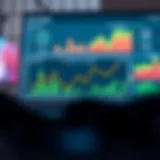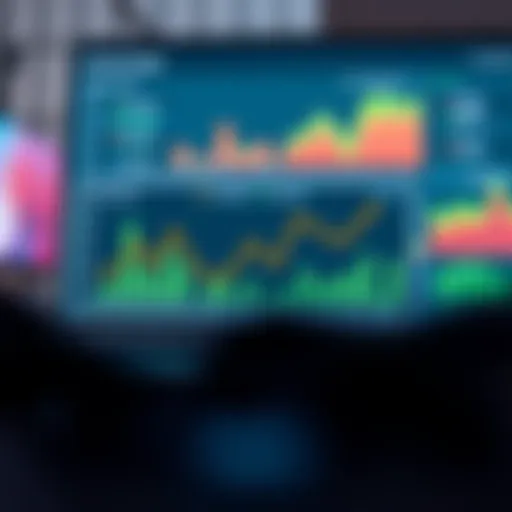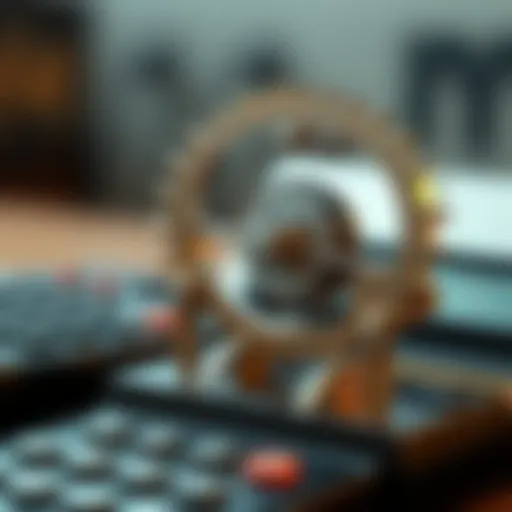Effective Strategies for Navigating Futures Trading
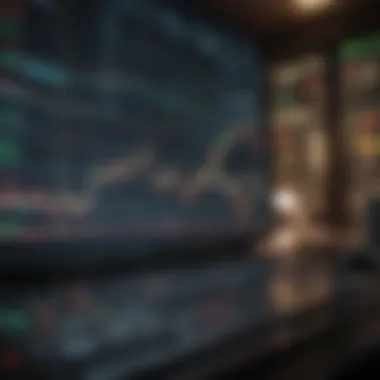

Intro
Navigating the world of futures trading can seem like trying to find a needle in a haystack, especially for those who are new to the financial scene. From hedgers to speculators, understanding the layers behind futures contracts is crucial. In essence, futures trading is a commitment to buy or sell an asset at a predetermined price on a specified date in the future. This flexibility enables investors to hedge against price fluctuations or speculate on market movements.
But why is this topic significant in today’s fast-paced financial environment? As markets continue to evolve, and more participants enter the arena, having a solid grasp of futures trading can not only enhance your trading strategies but also help in mitigating risks effectively. Here, we will strip down the complexities and explore different strategic approaches, providing readers with insights and guidelines designed to empower investors at any skill level.
By familiarizing ourselves with commonly used terminology and expert strategies, we lay the groundwork for intelligent, disciplined trading. Let's kick things off with a look at some key investment terminology that every trader should know.
Investment Terminology
Understanding the language of futures trading is akin to knowing the ropes before diving into the deep end. Here are some essential terms and definitions to get you started:
Key Terms and Definitions
- Futures Contract: A standardized legal agreement to buy or sell an asset at a future date for a specific price.
- Margin: The amount of capital that must be deposited to open and maintain a position in futures trading.
- Hedge: A risk management strategy that involves taking an offsetting position in a related asset to mitigate potential losses.
- Speculation: The practice of buying and selling financial instruments, like futures, with the expectation of making a profit.
- Settlement: The process of concluding a futures contract, either through physical delivery of the asset or cash settlement.
Common Acronyms in Finance
Navigating futures trading will often lead you to stumble upon a myriad of acronyms. Here are a few that frequently pop up:
- CME: Chicago Mercantile Exchange; a major marketplace for futures trading.
- NFP: Non-Farm Payroll; a key economic indicator that can impact futures prices.
- FIFO: First In, First Out; an inventory method which also applies to trading assets.
- OTC: Over-The-Counter; trading conducted directly between parties rather than on an exchange.
"Understanding the vocabulary of futures trading is vital because it shapes how you view and engage with the market. Penetrating this knowledge barrier is the first step towards strategic trading."
Next, let’s dive deeper into expert insights that can enhance your approach to trading.
Understanding Futures Trading
Understanding futures trading is a foundation stone for anyone diving into the intricate world of financial markets. This section sheds light on the core elements of futures contracts and why grasping these concepts is crucial for both novice and seasoned investors. Futures trading has evolved significantly over the years, influenced by economic conditions, technology advancements, and regulatory changes. By comprehensively understanding these dynamics, traders can make informed decisions that enhance their market strategies and risk management practices.
Definition of Futures Contracts
Futures contracts are legally binding agreements to buy or sell an asset at a predetermined price at a specified future date. This price is often referred to as the "futures price." Unlike a stock purchase, where ownership transfers immediately, in futures trading, the transfer of assets only occurs at contract expiration.
To illustrate, consider a wheat farmer who anticipates harvesting their crop in six months. Instead of waiting for the crop to be harvested and sold, the farmer enters into a futures contract that locks in the selling price today. This protects them from any adverse price fluctuations that might occur before the harvest. Similarly, a cereal manufacturer could also engage in buying futures contracts to ensure they can secure wheat at an agreed price, safeguarding their production costs.
Key components of futures contracts include:
- Underlying Asset: This could be anything from commodities like oil and gold to financial instruments like stock indices.
- Contract Size: Specifies the amount of the underlying asset covered by one futures contract.
- Expiration Date: The set date when the contract must be settled either by physical delivery or cash settlement.
- Futures Price: The agreed-upon price at which the asset will be bought or sold in the future.
Historical Context and Evolution
Futures trading is not a modern-day creation. Its roots can be traced back several centuries. The Tokyo Rice Exchange was one of the first organized futures exchanges established in the early 18th century. However, the practice gained significant momentum in the United States in the mid-19th century with the establishment of the Chicago Board of Trade (CBOT). Originally, futures contracts centered around agricultural products, enabling farmers to hedge against crop failures and price drops.
Over time, the scope of futures trading expanded. The 1970s and 1980s saw the introduction of futures on financial instruments, such as stock indices and interest rates, reflecting the changing nature of global economies. Today, futures markets are crucial for providing price discovery and risk management solutions across a wide array of asset classes. The rise of electronic trading platforms has further democratized access to these markets, allowing anyone with an internet connection to participate.
Types of Futures Markets
Futures markets can be broadly classified into several categories based on the underlying asset and the purpose of trading. Understanding these types provides insight into how traders can strategically position themselves within different market environments.
- Commodity Markets: These include agricultural products like corn, wheat, and soybeans, as well as natural resources like oil and precious metals. For instance, a trader may monitor climate forecasts to predict price movements in agricultural commodities.
- Financial Futures: These encompass contracts based on financial instruments, including currency futures, interest rate futures, and stock index futures. Traders often use these to hedge against movements in foreign exchange or interest rates.
- Index Futures: These track the performance of a specific stock market index, such as the S&P 500 or the Dow Jones Industrial Average. They are particularly favored by investors looking to gain exposure to a wider market without having to buy individual stocks.
- Crypto Futures: With the rise of digital currencies, futures contracts based on cryptocurrencies like Bitcoin have emerged, drawing interest from speculative traders and long-term investors alike.
Understanding these various markets can arm traders with insights necessary to tailor their strategies, balance risks, and enhance their overall trading performance.
"The futures market serves not only as a place to speculate, but also as a valuable tool for risk management."
By comprehensively understanding the definition, historical context, and types of futures markets, traders can better navigate the complexities of futures trading. This foundation sets the stage for diving deeper into more advanced trading strategies and risk management principles, as outlined in the subsequent sections.
Key Components of Futures Trading
Futures trading can be a double-edged sword, rewarding yet risky. Understanding the key components is vital for anyone looking to get a grip on their trading strategy. This section breaks down critical elements that shape futures markets, detailing how they influence trading decisions and impact potential returns.


Contract Specifications
Every futures contract has specific characteristics that dictate how it operates. These specifications include details such as the underlying asset, contract size, expiration date, and tick size. The underlying asset could be anything from crude oil to wheat, and each has its quirks.
For instance, a standard crude oil contract typically represents 1,000 barrels. The expiration date is crucial, as it marks when the contract expires. Traders must be well-versed in these specs, as they can greatly influence trading strategies. Knowing the contract size can help manage risk more effectively, allowing for better capital allocation.
Investors should also pay attention to the tick size, which is the smallest price movement that can occur in the market. If you're trading a futures contract where the tick size is one cent, then small market movements could have a significant impact on profitability.
Leverage and Margin Requirements
Leverage is a powerful ally in futures trading, yet it’s a sword that cuts both ways. When a trader uses leverage, they can control a larger position with comparatively smaller capital. This is because futures typically have margin requirements, which is the amount one needs to deposit to open a position.
For example, if you’re trading a futures contract worth $10,000 and the margin requirement is 10%, you would only need to put up $1,000. This can lead to bigger profits, but if your trade goes south, losses can mount just as fast.
Understanding how margin works could save traders from getting caught in tight spots. Heightened awareness of margin calls—when your account balance falls below the required level—can assist in maintaining trading discipline and avoiding unnecessary panic.
"In futures trading, every decision counts; a moment of clarity can shield you from significant loss."
Liquidity in Futures Markets
Liquidity refers to how quickly a trader can enter or exit a position without causing a significant impact on the asset’s price. High liquidity generally means lower transaction costs and narrower spreads, making it easier for traders to execute their strategies.
The futures market is typically more liquid than many other trading environments. However, this varies by contract and time of day. For example, crude oil futures might experience surging liquidity during peak trading hours, while agricultural contracts might lag.
Knowing which markets have high liquidity can be a game-changer. It allows traders to capitalize on short-term movements without worry about being stuck in a position.
Strategies for Effective Futures Trading
Futures trading, while potentially lucrative, can feel like navigating a labyrinth without a map. This section emphasizes vital strategies that can serve both the budding investor and the seasoned trader. Establishing a robust trading approach is crucial because, without direction, it’s easy to succumb to chaotic market movements or make emotional decisions that lead to losses.
A well-constructed strategy can indeed be a trader’s best ally, helping one to stay disciplined and focused in a fast-paced environment. This acts as the backbone of any successful trading operation, as it not only helps in identifying market opportunities but also in managing risks effectively.
Incorporating various elements such as thorough market research, proper analysis, and emotional control can enhance a trader’s chances of success. The benefits of having a strategy extend beyond just making profits; they also include improved confidence, clearer decision-making pathways, and a proactive approach to market challenges. After all, good trading is not about luck; it’s about preparation and knowledge.
Developing a Trading Plan
A trading plan is somewhat like a road map. It sets the path for you to follow. When crafting your plan, consider factors such as your investment goals, risk tolerance, and time commitment. A detailed plan often includes:
- Trading goals: What are you hoping to achieve? Be it short-term profits or long-term investments; clearly define your objectives.
- Risk management: Determine how much capital you are willing to risk on each trade. This might mean setting a specific dollar amount or a percentage of your total funds.
- Entry and exit strategies: Outline your criteria for entering and exiting a position. This might involve setting specific price points or indicators to trigger a trade.
- Self-evaluation: Regular reviews of your trades and strategy can help refine your approach. Ask yourself what worked, what didn’t, and adjust accordingly.
Incorporating these elements will increase your proclivity to make informed decisions rather than responding impulsively to market shifts.
Technical Analysis Basics
Technical analysis is essentially the study of price movements on charts. By using historical data, traders can look for patterns or trends that might indicate future market movements. Here are some plates to consider:
- Charts: Familiarize yourself with various chart types, like line and candlestick charts. Each offers unique insights and can influence trading decisions.
- Indicators: Tools like moving averages and Relative Strength Index (RSI) can help in identifying potential entry and exit points. They are often vital for confirming trends or spotting reversals.
- Volume: Understanding trading volume is key. High volumes can indicate strong trends, while low volumes may suggest indecision.
Remember, technical analysis isn’t foolproof, but integrating it into your strategy can certainly enhance your trading effectiveness.
Fundamental Analysis in Futures Trading
Fundamental analysis takes a broader look at the market. Rather than focusing solely on price patterns, it examines economic indicators, supply and demand factors, and geopolitical events that might sway the market. Key components include:
- Economic data: Reports such as GDP growth rates, unemployment rates, and inflation figures can impact futures prices significantly. Weigh these metrics carefully.
- Market news: Stay updated on industry news and global events. A sudden announcement or a geopolitical tension can shake the market in moments.
- Supply and demand dynamics: Understanding the fundamentals of the specific asset you are trading (like agricultural products or energy supplies) can provide deeper insights into potential price movements.
Using both technical and fundamental analysis gives a trader a comprehensive perspective. As the wise market saying goes, "Don’t put all your eggs in one basket.” Balancing these approaches can lead to a sturdier trading strategy.
Risk Management Principles
In the fast-paced world of futures trading, understanding the principles of risk management is not just essential; it is the cornerstone of successful trading. Traders, whether novices or veterans, ought to appreciate that risk management goes beyond merely protecting capital; it's about making informed decisions that lead to sustainable trading practices over the long haul. One wrong move can turn what seems like a good trade into a substantial loss. Therefore, recognizing potential risks and developing strategies to mitigate them is crucial.
Identifying and Assessing Risks


Identifying risks in futures trading involves understanding the different types of exposures that one may face. This might include market risk, where price fluctuations in the underlying asset can impact profitability, or liquidity risk, where an inability to buy or sell contracts can result in unforeseen losses. There are also operational risks arising from human errors or system failures.
Assessing these risks requires a systematic approach. Traders can utilize tools such as Value at Risk (VaR) to measure risk exposure. This tool estimates the potential loss in value of a trading position under normal market conditions over a set time period. It’s an invaluable metric that helps traders determine how much capital they are willing to risk on any given trade.
Moreover, keeping a trading journal can be beneficial. Documenting trades provides insight into one’s trading behavior, highlighting patterns that may indicate riskier tendencies.
Utilizing Stop-Loss Orders
Stop-loss orders are a foolproof way to rein in potential losses. These orders automatically sell a futures contract when it reaches a certain price, essentially acting as a safety net. Setting a stop-loss is a personal decision; what's right for one trader might not work for another, depending on individual risk tolerance and market conditions.
One common method is setting the stop-loss at a percentage loss threshold. For instance, if a trader decides they can only afford to lose 2% of their trading capital on a specific trade, they would place a stop-loss order accordingly.
Using stop-loss orders can significantly reduce emotional decision-making during volatile market conditions. Traders who fear losing money might close positions prematurely, only to see the market rebound the next day. With stop-loss orders in place, traders can stick to their strategy without being swayed by market noise.
"An effective risk management strategy isn't just about avoiding losses; it's about maximizing potential gains within a controlled framework."
Diversification Techniques
Diversification isn’t just a buzzword to toss around; it is a fundamental principle that should be embedded in any trading strategy. By spreading investments across various contracts, sectors, or even markets, traders can minimize the impact of a poor-performing asset on their overall portfolio.
Investing in different futures contracts, such as commodities, indices, or currencies, allows traders to capture gains from various sources, reducing dependency on a single market condition.
Here are a few techniques tailored for futures traders:
- Asset Class Diversification: Invest in different asset classes such as grains, energy, or metals. Each market often reacts differently to global events.
- Temporal Diversification: Consider contracts that expire in different months. This helps to capture opportunities across various market cycles.
- Sector Diversification: Incorporate contracts from different economic sectors. For instance, combining agricultural futures with energy futures can provide a buffer against sector-specific downturns.
Incorporating these strategies not only serves to protect against volatility but also enhances long-term growth potential, striking a necessary balance between risk and reward in futures trading.
Psychological Aspects of Trading
Psychological aspects of trading are crucial in understanding how investors react to market movements. While technical and fundamental analyses focus on the numbers and data, the mental game plays an equally significant role. Recognizing emotional triggers and biases can be the difference between a successful trade and a catastrophic loss.
In the high-stakes world of futures trading, maintaining a sharp psychological edge allows traders to navigate the complexities of market behavior. Possessing a solid grasp of market psychology can empower both beginners and seasoned investors to make informed decisions rather than succumbing to emotional impulses. This section explores the importance of understanding market psychology and the necessity of emotional control in trading decisions.
Understanding Market Psychology
Market psychology refers to the collective emotional state of traders and investors within the markets. The decisions made by individual traders can create larger market trends based on sentiment rather than fundamental factors. For instance, groupthink during a bullish market can lead to herd behavior and inflated prices, while panic selling might surface rapidly during downturns.
Some key elements to consider include:
- Fear and Greed: These emotions often dictate market trends. When prices rise, greed can drive market participants to take on excessive risks, leading to bubbles. Conversely, fear can cause them to react impulsively when the market turns.
- Loss Aversion: Many traders are more sensitive to losses than they are to gains. This can create a reluctance to exit losing trades, resulting in compounded losses.
- Confirmation Bias: Investors may search for information that supports their existing beliefs about a trade, which can cloud judgment as they overlook opposing data.
Understanding these psychological factors helps traders develop strategies to manage their feelings, fostering a disciplined approach that mitigates risks. As a result, traders can better align their actions with their trading plans and goals.
"The greatest enemy of a trader is their own state of mind."
– Anonymous
Emotional Control in Trading Decisions
Having mastery over one’s emotions is paramount in making prudent trading decisions. Emotional control allows traders to remain rational amid market fluctuations, avoiding the dire consequences of impulsive behaviors.
To build emotional control, it’s vital to consider the following:
- Set Clear Goals: Outlining specific trading objectives can provide direction and clarity, helping to mute emotional responses during market volatility.
- Practice Mindfulness: Techniques such as deep breathing or meditation can help traders stay grounded, minimizing knee-jerk reactions.
- Emotional Journaling: Keeping a record of emotions felt during trading can highlight patterns and triggers, allowing traders to recognize when they’re swaying from their strategy.
In futures trading, where volatility can be extreme, emotional control serves as a buffer against irrational decisions. Even seasoned investors can make costly mistakes when emotions run high, so fostering a disciplined mindset is essential for long-term success.
By enhancing their understanding of market psychology and strengthening emotional resilience, traders can improve their decision-making in the highly competitive landscape of futures trading.
Tools and Resources for Futures Traders
In the intricate world of futures trading, having the right tools and resources can make or break an investment strategy. This section unpacks the essentials that traders, whether greenhorns or veterans, should leverage to enhance their trading experience. These tools not only aid in informed decision-making but also help in navigating the often tumultuous waters of futures markets.
Essential Trading Platforms
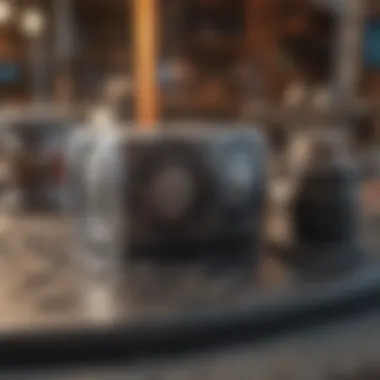

Among the frontlines of futures trading, platforms stand as the gateways to market participation. It's crucial to select a trading platform that fits one’s trading style and needs. There are several options out there, each offering unique features.
- Interactive Brokers - Known for competitive pricing and a wide spectrum of investment options, it caters to both beginners and advanced traders. The sleek interface and comprehensive tools make it a favored choice.
- TD Ameritrade - With its robust educational resources and user-friendly interface, it serves traders looking to learn while trading. The Thinkorswim platform they provide is particularly noted for its technical tools.
- E*TRADE - Another well-regarded option, E*TRADE not only offers a versatile platform but also an intuitive trading experience suitable for all types of traders. Their research and analysis tools are extensive.
When selecting a platform, one should consider factors like commission fees, ease of use, and the types of analysis tools available. Remember, more often than not, the best platform is the one that simplifies the trading process while providing the necessary insights for making sound decisions.
Market Analysis Tools
Proper market analysis is at the crux of successful futures trading. Tools that facilitate this analysis can provide the edge needed to spot trends before they become apparent to the masses. Here, we cover a few foundational market analysis tools essential for futures traders:
- Charting Software - Tools like TradingView or MetaTrader equip traders with advanced charting capabilities. These enable users to visualize price movements over different periods.
- Economic Calendars - Keeping an eye on macroeconomic events is crucial, and tools like Forex Factory or Investing.com offer comprehensive calendars that outline upcoming economic releases and events.
- Analytical Tools - Platforms might provide built-in technical indicators such as moving averages, Bollinger Bands, and other analytical graphs that help identify potential market movements.
These tools can significantly enhance a trader's ability to make effective decisions based on analytical data rather than just gut feelings.
Educational Resources
For anyone dipping their toes into futures trading or those looking to refine their skills, educational resources are indispensable. The learning curve in this domain can be steep, but the right resources can smooth the ride.
- Online Courses - Websites like Coursera and Udemy offer courses specifically tailored to futures trading. This allows traders to learn at their own pace and focus on specific areas of interest or weakness.
- Books and Literature - Classics like "Trading in the Zone" by Mark Douglas or "Market Wizards" by Jack Schwager provide timeless insights into the psychology and strategies behind trading.
- Forums and Online Communities - Engaging with others can offer valuable perspectives. Websites like Reddit or dedicated trading forums allow for discussion, sharing strategies, and networking, which can be incredibly beneficial for traders at any level.
Regulatory Environment of Futures Trading
The regulatory environment surrounding futures trading is crucial for fostering a fair and transparent marketplace. Effective regulations ensure that all participants, from small retail traders to large institutional investors, operate on a level playing field. This section delves into the key roles of regulatory bodies, the importance of compliance, and the various trading regulations that help govern futures markets.
Understanding Regulatory Bodies
In the world of futures trading, regulatory bodies serve as the watchful guardians of market integrity. Agencies like the Commodity Futures Trading Commission (CFTC) in the United States play a pivotal role in overseeing futures transactions and ensuring adherence to the law. Their primary functions include:
- Enforcement of Market Rules: These bodies create and enforce rules that protect investors and promote fair practices, ensuring no one has an unfair advantage.
- Education and Outreach: They often engage in educational initiatives that help traders understand the risks and benefits associated with futures trading.
- Market Surveillance: Regulatory agencies monitor trading activities to detect any suspicious patterns that might indicate fraud or market manipulation.
Understanding the framework established by these entities is vital for traders. Compliance with the guidelines not only helps one avoid legal issues but also builds trust and enhances market stability.
Compliance and Trading Regulations
Compliance with the existing trading regulations is non-negotiable. These regulations can vary significantly based on the jurisdiction and the specific futures market in question, but they serve important purposes:
- Consumer Protection: Regulations ensure that traders are protected from unethical practices, promoting safety and security in their trading activities.
- Market Transparency: By setting standards for reporting and disclosures, regulations offer a clearer view of market activities, allowing traders to make more informed decisions.
- Risk Mitigation: Through stringent margin requirements and other compliance mandates, rules help minimize systemic risks associated with futures trading.
To navigate this regulatory landscape effectively, traders should:
- Familiarize themselves with the specific laws pertinent to their trading activities.
- Stay updated on any amendments to existing regulations that could affect their strategies.
- Engage in discussions on forums such as reddit.com to connect with other traders and gain insights into regulatory changes.
"Understanding the regulatory environment is not just about compliance; it's about empowerment through knowledge. It's the key to navigating the future of trading successfully."
Future Trends in Futures Trading
Understanding the evolving landscape of futures trading is crucial for both budding traders and seasoned investors. The continuous shift in market dynamics, regulatory frameworks, and technological advancements shapes how traders approach their strategies. Embracing these future trends can lead not only to improved outcomes but also to a more resilient trading strategy.
Emerging Market Stresses
Every market has its ups and downs, and futures trading is no different. Emerging market stresses often reflect underlying economic volatility or global crises that impact commodity prices, interest rates, and currency values. A trader's ability to navigate these stresses is vital.
For instance, a sudden geopolitical event—a conflict in oil-rich regions—can send crude oil prices soaring, shaking the futures market. Investors need to consider:
- Global interconnectedness: Markets aren’t isolated. What happens overseas can ripple through local prices.
- Economic indicators: Pay attention to GDP, inflation rates, and unemployment statistics, as these can hint at underlying market stresses.
- Risk factor: Understanding your risk tolerance becomes essential during high-stress periods, as emotions can lead to poor decisions.
"Navigating through emerging market stresses requires more than just analysis; it demands emotional discipline and a robust strategy."
Technological Advances and Their Impact
Technology has carved a new path for futures trading over the years. From algorithmic trading to artificial intelligence, these advancements streamline trading processes, allowing for faster execution and enhanced market analysis.
Examples of technological impacts include:
- Trading Platforms: State-of-the-art platforms, like TD Ameritrade and Interactive Brokers, enable traders to execute strategies with ease and access a wealth of analytical tools.
- Algorithmic Trading: Algorithms can analyze vast datasets to identify patterns and execute trades at lightning speed, which is key in high-volatility environments.
- Data Analytics: Using data visualization tools, traders can uncover insights that were previously buried in numbers.
As futures trading continues to embrace technology, staying updated is essential. The tech-savvy trader who leverages these tools can gain a competitive edge.
Ultimately, recent trends signal that adaptability will be at the forefront of successful futures trading strategies. Investors must recognize these shifts and adjust their methods accordingly, ensuring that their trading plans remain relevant in a rapidly changing market.




